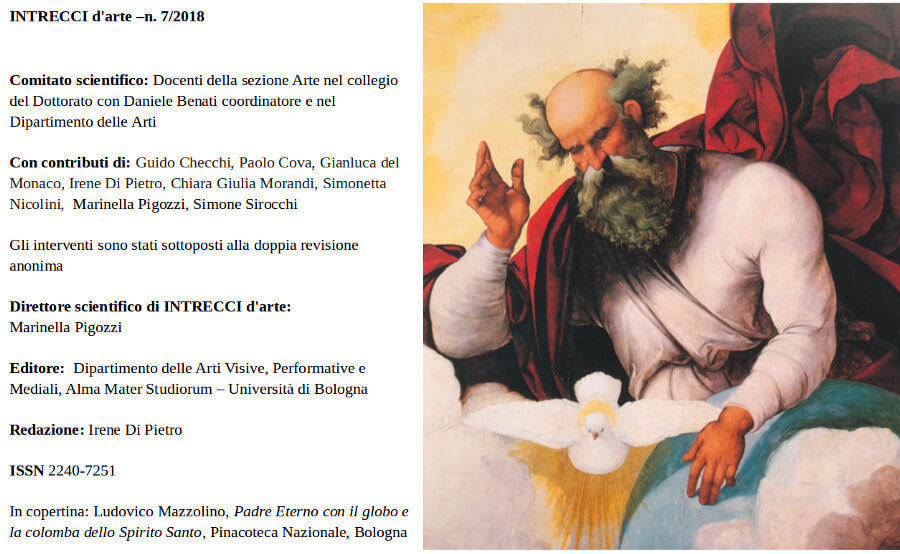Fourteenth-century Remains in San Martino Maggiore, Bologna: Painted Vestiges of a Sacred Space during the Gothic Age
DOI:
https://doi.org/10.6092/issn.2240-7251/8643Keywords:
Bologna, Trecento, Bolognese Painting, Vitale da Bologna, Simone di Filippo, Mendicant OrdersAbstract
The Carmelite Basilica of San Martino Maggiore is among the Bolognese mendicant churches with the most important evidence of fourteenth-century painted decoration, together with San Giacomo Maggiore, the seat of the Hermits of St. Augustine, and Santa Maria dei Servi, the house of the Servants of Mary. The scattered and isolated remnants of Trecento painting in San Martino include: a fragmentary complex of murals made in subsequent phases during the second quarter of the fourteenth century at the end of the north nave near the entrance to the sacristy, a column painted by Pseudo Dalmasio, incorporated within the third right pillar between the third and fourth bays, the fragment of a mural depicting the Crucifix, a late work by Vitale degli Equi, detached and moved onto the fifth right pillar between the fifth and sixth bays, finally, a mural painting in a niche representing the Madonna of Humility by Simone di Filippo, also known as “dei Crocifissi”, along the left wall of the church near the entrance to the cloister. Although both the surviving evidence and the related archival documentation is fragmentary, the article intends to make a first attempt to place those paintings in the architectural and religious context of the Carmelite church of Bologna.Downloads
Published
How to Cite
Issue
Section
License
Copyright (c) 2018 Gianluca Del Monaco
The copyrights of all the texts on this journal belong to the respective authors without restrictions.
This journal is licensed under a Creative Commons Attribution 4.0 International License (full legal code).
See also our Open Access Policy.
Images and photographs may have different terms of license.
In making material available online the Journal acts in good faith. Parties who have questions or who wish to contest the use of specific works may contact the Editor in chief.
Metadata
All the metadata of the published material is released in the public domain and may be used by anyone free of charge. This includes references.
Metadata — including references — may be re-used in any medium without prior permission for both not-for-profit and for-profit purposes. We kindly ask users to provide a link to the original metadata record.






